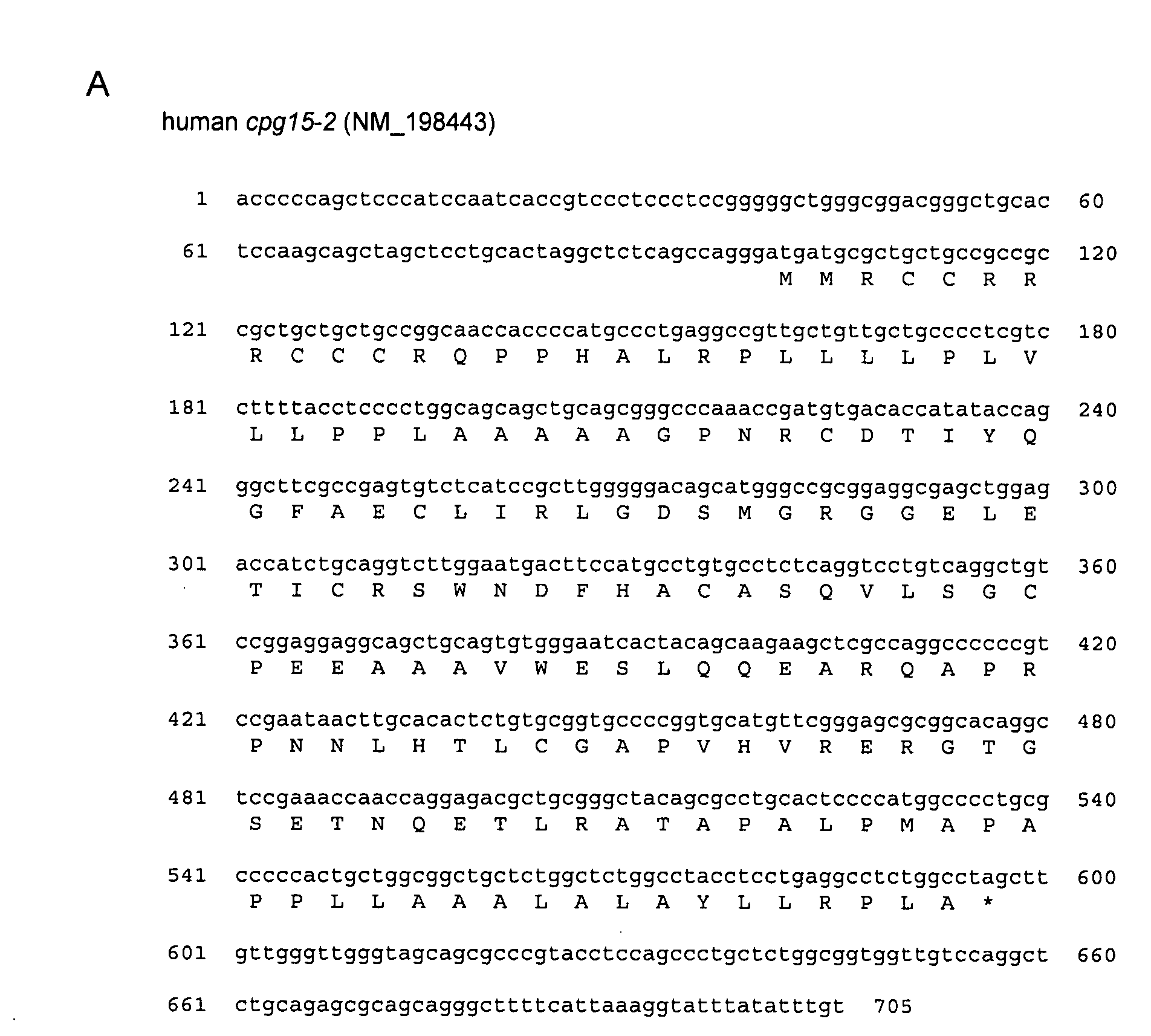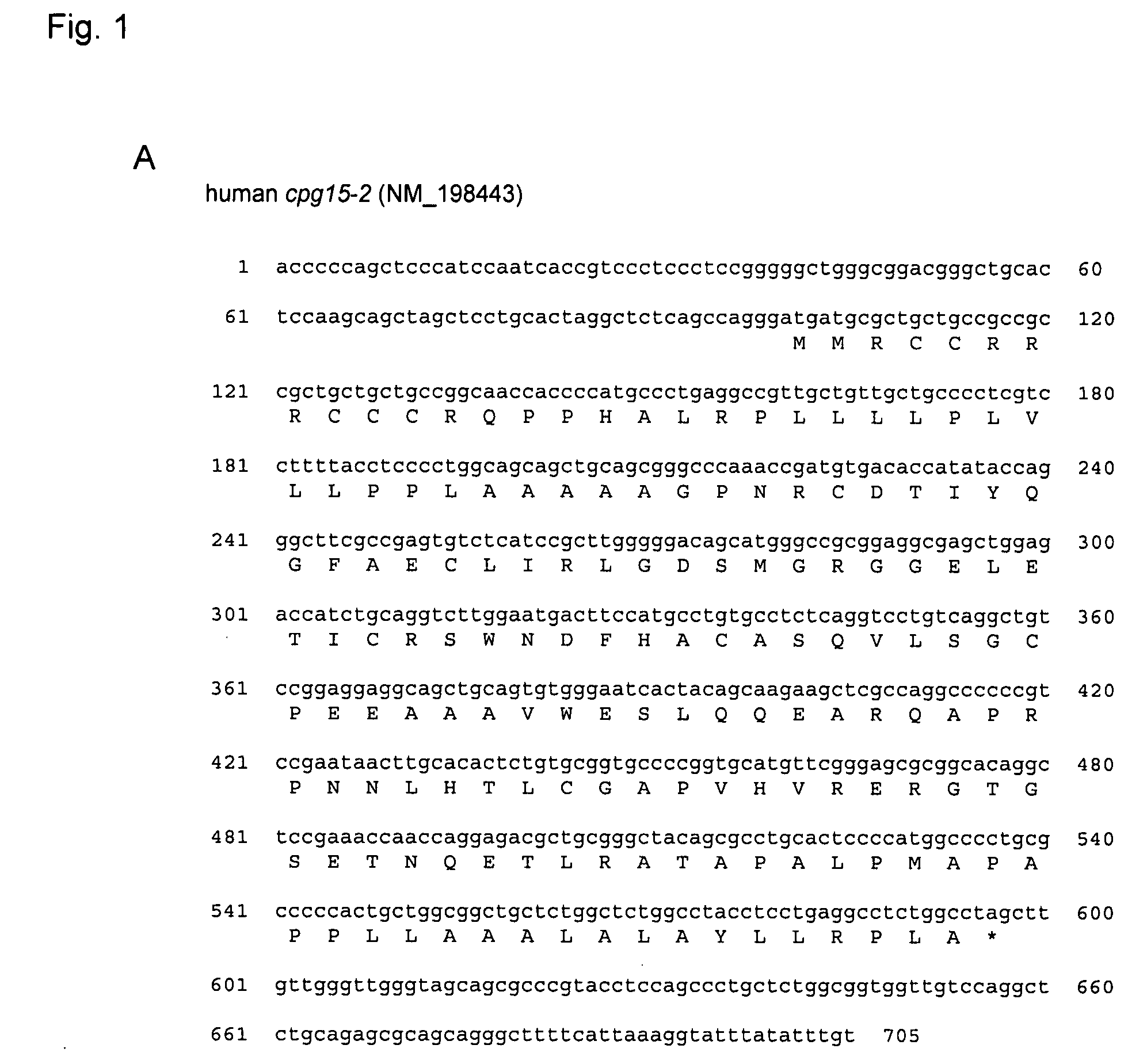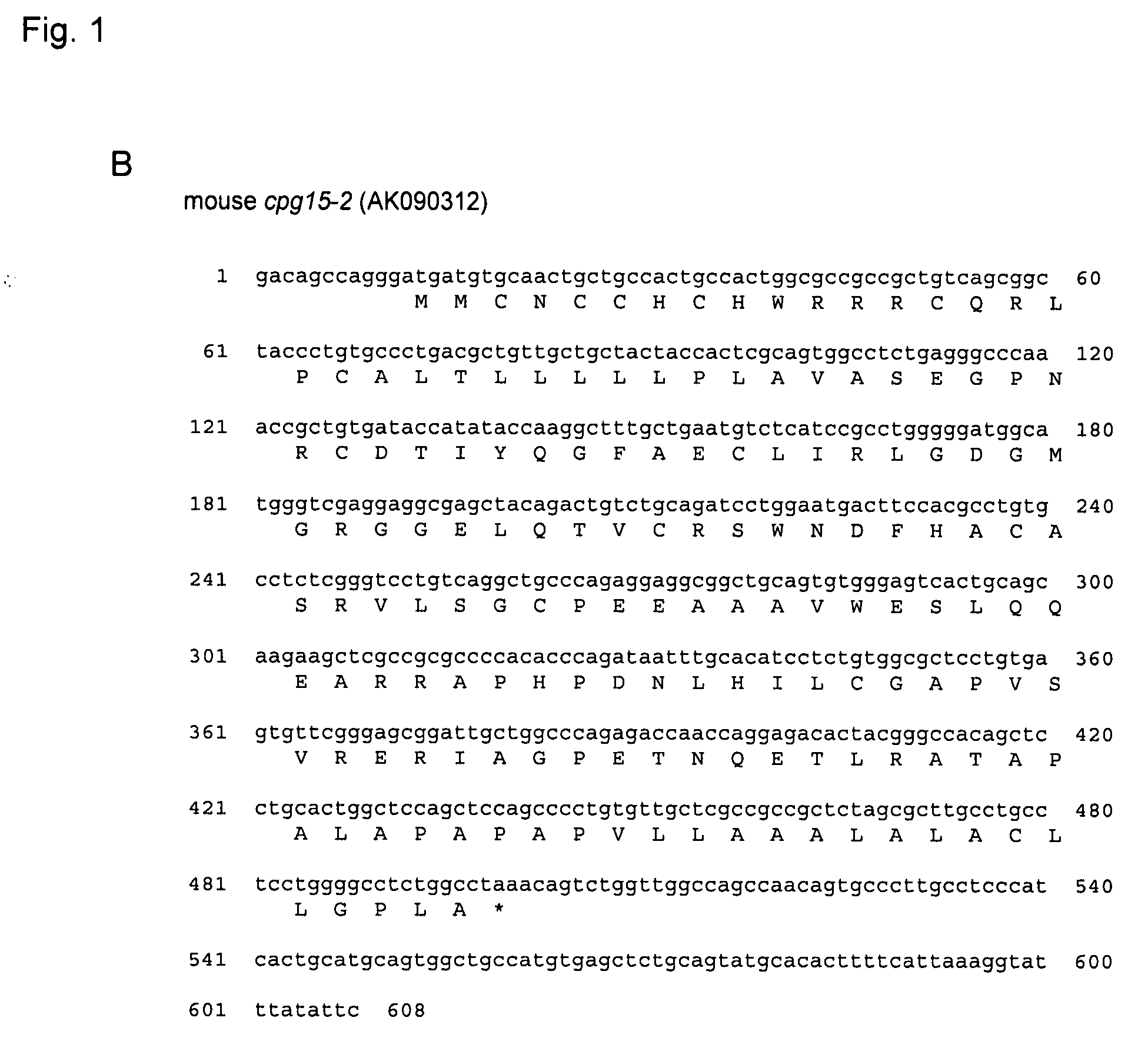Methods and compositions for CPG15-2
a technology of cpg and composition, applied in the field of compositions of cpg 152, can solve the problems of large cell death of groups of cells in the affected tissue, difficult to classify as necrotic or apoptotic, and the delicate balance of neuronal cell growth and death, so as to promote cell growth and differentiation, and little nucleotide or amino acid sequence homology
- Summary
- Abstract
- Description
- Claims
- Application Information
AI Technical Summary
Benefits of technology
Problems solved by technology
Method used
Image
Examples
example 1
Isolation and Sequence Analysis of cpg15-2
[0186]cpg15-2 was identified in a Genbank database search for genes encoding proteins similar to human CPG15 / neuritin (accession number AF136631) using the BLASTP program (http: / / www.ncbi.nlm.nih.gov / blast / ) with default settings. The search yielded a human predicted mRNA MRCC2446 (accession number NM—198443) that we termed human cpg15-2 (FIG. 1A) and a mouse cDNA clone G630049C14 (accession number AK090312) we termed mouse cpg15-2 (FIG. 1B). The mouse clone shared 34% identity and 59% similarity at the amino acid level with mouse CPG15 (FIG. 1A). No other mouse sequence with significant similarity was found, suggesting that cpg15 and cpg15-2 are the only members of this gene family in mouse.
[0187]The mouse cpg15-2 cDNA was isolated from adult mouse brain RNA by RT-PCR. For RT-PCR, poly (A)+ RNA was reverse transcribed using the SuperScript first-strand synthesis system for RT-PCR (Invitrogen, Carlsbad, Calif.), and the coding region of the ...
example 2
Developmental and Tissue Specific Expression of cpg15-2 mRNA
[0192]To being characterizing cpg15-2, we used Northern blot analysis to examine its expression in the mouse brain. For RNA preparation from kainate injected mice, cerebral cortices were harvested 6 hours after intraperitoneal injection of kainate (25 mg / kg) in PBS. Northern blot hybridization was done as described Sambrook et al., supra) with the following modifications. Poly (A)+ RNA selection was done using Oligotex (Qiagen, Valencia, Calif.). Ten micrograms of poly (A) enriched RNA was separated on 1% agarose gel containing formaldehyde, transferred to a nylon membrane, and hybridized with 32P-labeled probes using stringent conditions. Probes were synthesized using the High Prime labeling kit (Roche, Indianapolis, Ind.) from the 1.6 kb mouse cpg15 cDNA fragment, 0.5-kb mouse cpg15-2 cDNA fragment or the 316-bp mouse GAPDH cDNA fragment excised from pTR1-GAPDH-mouse (Ambion, Austin, Tex.). The blot was hybridized first w...
example 3
CPG15-2 is a Glycoprotein that Exists as a Both a Membrane Bound Form and a Secreted Soluble Form
[0199]To study the biochemical properties of CPG15 and CPG15-2 proteins, we made HEK293 cells stably expressing a FLAG-tagged CPG15 or CPG15-2. The FLAG-tagged proteins were then immunoprecipitated from the cell lysate and culture supernatant using an anti-FLAG antibody, then visualized on a Western blot using the same antibody.
[0200]The FLAG or poly-histidine (His) tagged constructs were generated as follows. A FLAG or poly-histidine (His) tag was inserted after the signal peptide sequence of CPG15 and CPG 15-2. An N-terminal fragment encoding the signal peptide and a tagged C-terminal fragment encoding the core domain and the GPI-anchoring signal were each generated by PCR from the full length cDNA with the following primers.
His-tagged cpg15 N-terminal fragment:
(SEQ ID NO: 13)5′-GGAATTCGCCACCATGGGACTTAAGTTGAACGG-3′and(SEQ ID NO 14)5′-GGGGTACCGCCTGCTGCTCTCACGG-3′;
His-tagged cpg15 C-term...
PUM
| Property | Measurement | Unit |
|---|---|---|
| temperatures | aaaaa | aaaaa |
| temperatures | aaaaa | aaaaa |
| temperatures | aaaaa | aaaaa |
Abstract
Description
Claims
Application Information
 Login to View More
Login to View More - Generate Ideas
- Intellectual Property
- Life Sciences
- Materials
- Tech Scout
- Unparalleled Data Quality
- Higher Quality Content
- 60% Fewer Hallucinations
Browse by: Latest US Patents, China's latest patents, Technical Efficacy Thesaurus, Application Domain, Technology Topic, Popular Technical Reports.
© 2025 PatSnap. All rights reserved.Legal|Privacy policy|Modern Slavery Act Transparency Statement|Sitemap|About US| Contact US: help@patsnap.com



